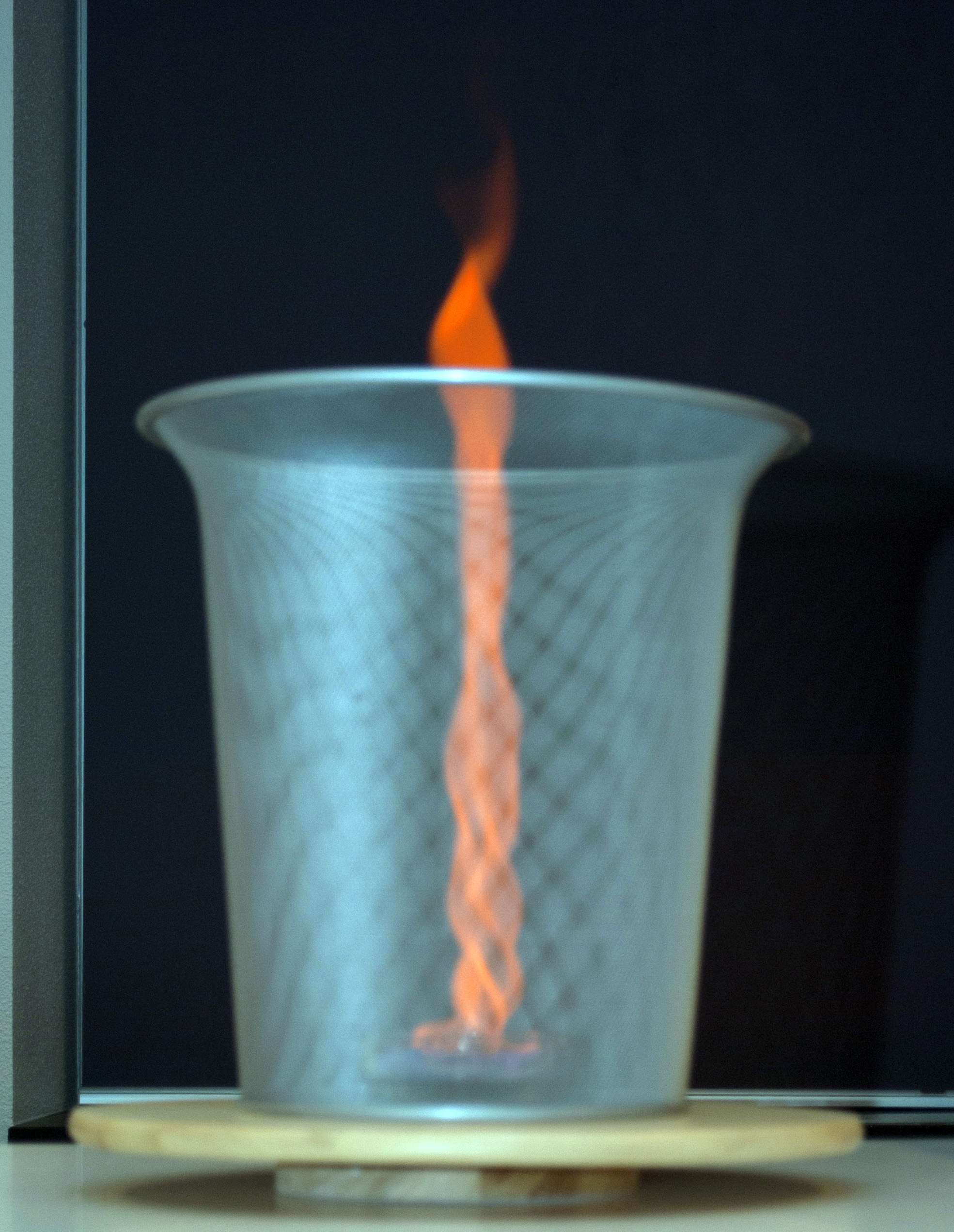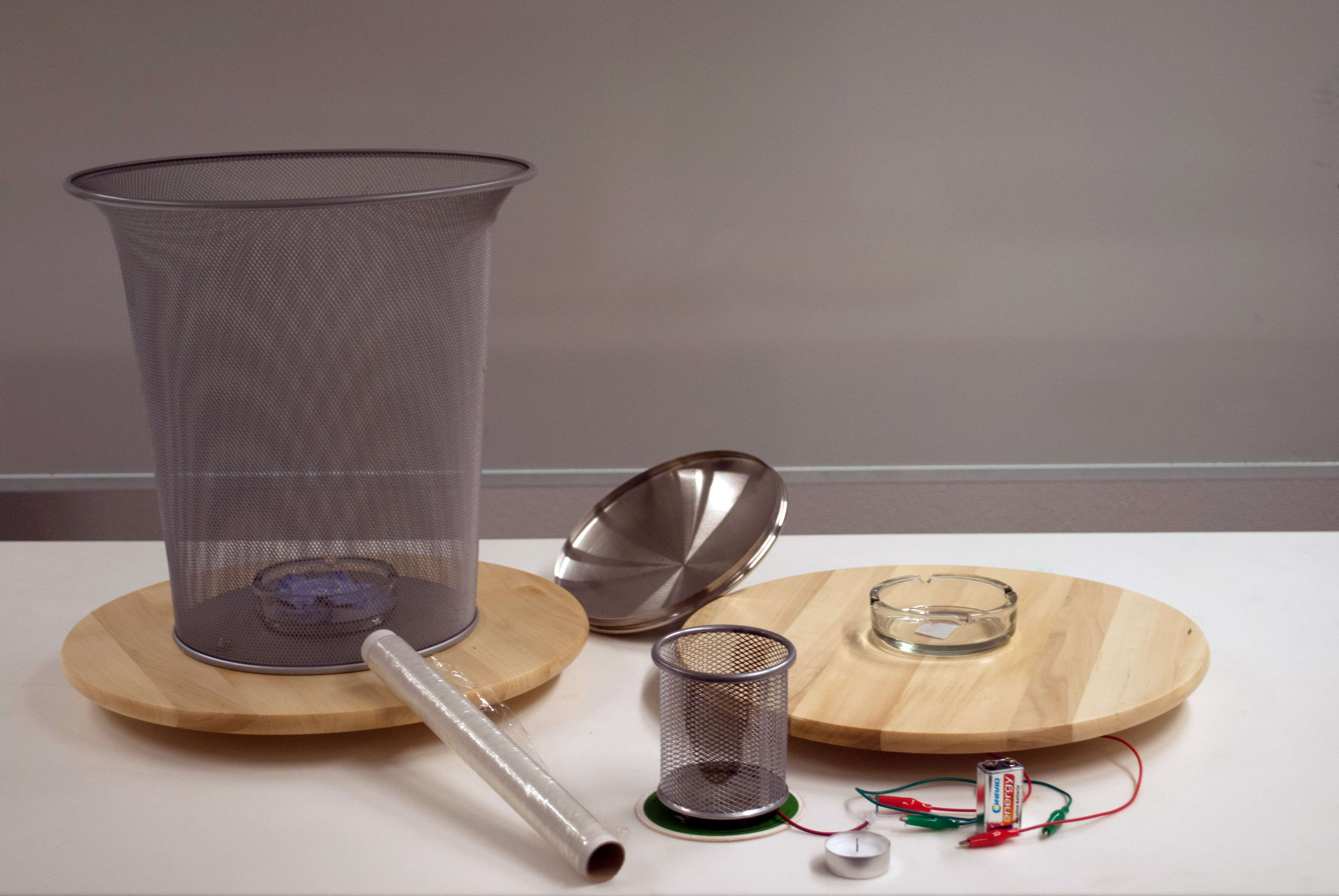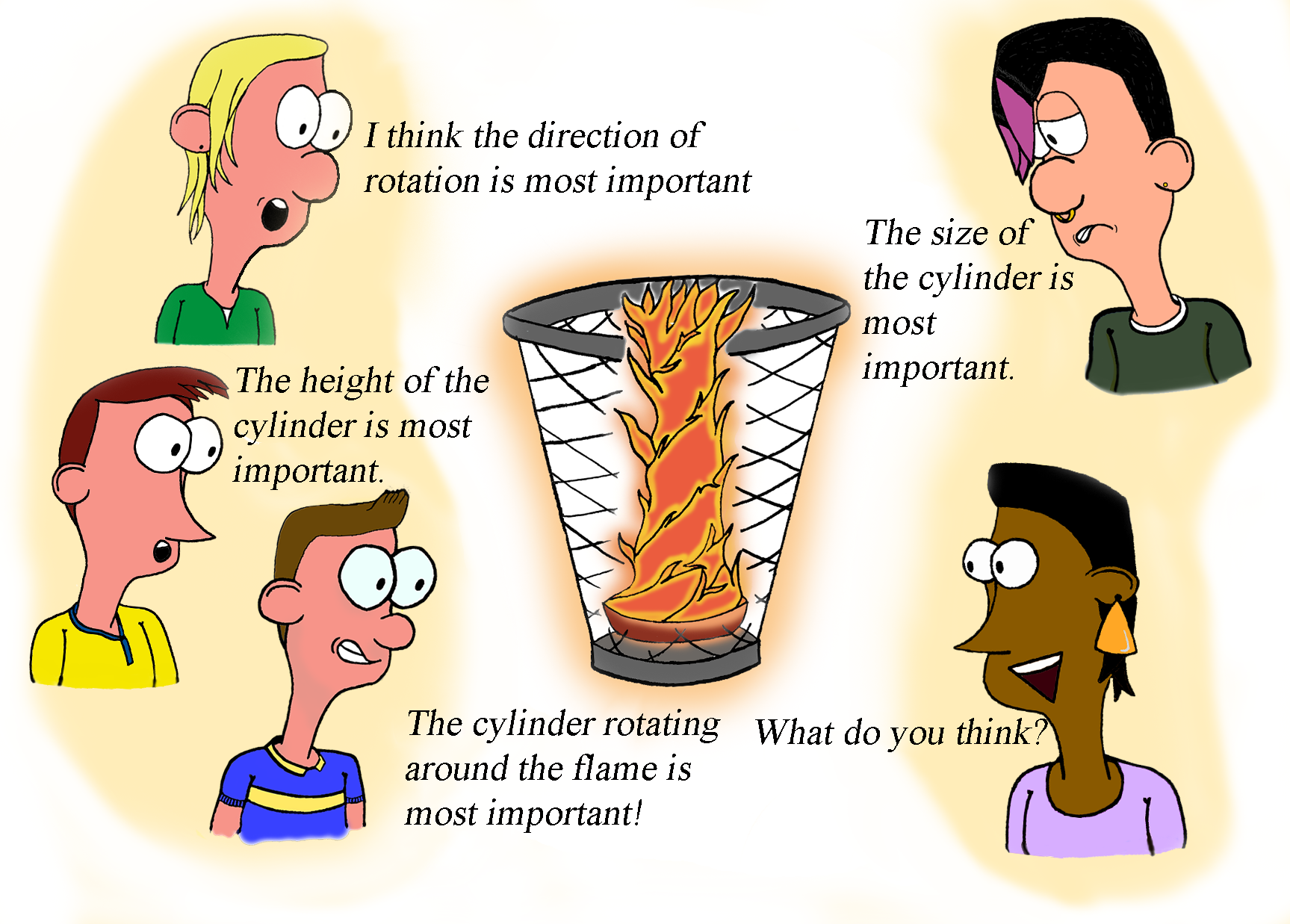14.5. Investigating a devastating Flame#
| Author: | Wouter Spaan |
| Time: | 15+ minutes |
| Age group: | 14 - 18 |
| Concepts: | Combustion, angular momentum, testing explanations, designing experiments, drawing conclusions |

Fig. 14.10 The fire tornado in a rotating trash can.#
Introduction#
A rare and devastating phenomenon in forest fires in warm, dry areas is a fire tornado: A flame begins to rotate and becomes significantly higher. In miniature, it’s a spectacular demonstration, very suitable for qualitative investigation. By inviting suggestions for investigations from your students, you can explore what is important in the formation of a fire tornado. The ultimate explanation is quite complex and goes beyond high school physics. However, understanding the physics that is involved is not really necessary: Investigating the possible influences is interesting enough.
Equipment#
Rotating platform (e.g., for a cheese board);
Fireproof container or ashtray;
Perforated trash can (see image) or fine mesh;
Cotton balls soaked in alcohol;
Little kitchen salt;
Lid for covering;
Safety goggles.
Various variations on this, for example, a smaller trash can (or other cylinder with holes), household foil to cover holes, small fans, chicken wire with larger holes, and so on.

Fig. 14.11 Some items that can be useful if you want to investigate suggestions from students.#
Preparation#
Assemble the large setup.
Soak the cotton balls well with alcohol, to which a little salt may be added to make the flame more visible.
Hide the other props from the students.
Darken the room for maximum visual effect.
Warning
Provide adequate extinguishing agents (fire extinguishers, lid, blanket, etc.), suitable for liquid and solid fires (A and B). Of course, wear safety goggles.
Try out various experiments calmly and resist the temptation to do something in class that you haven’t prepared.
Procedure#
There are many ways to perform this demonstration. In the described execution, the emphasis is on research skills, particularly investigating a phenomenon and testing explanations.
Start with a video or photo of a real-life fire tornado. Then show the fire tornado in miniature. Invite the students to investigate this phenomenon focusing on the question: What is needed to create a fire tornado in this experiment? The concept cartoon can be helpful if the students themselves don’t come up with enough suggestions.
Explicitly invite them to come up with various suggestions how such a tornado comes to existence. List their suggestions on the board. Some students might suggest an experiment; others will suggest various explanations. For the first group, it’s important to ask what exactly the students want to find out. For the second group, ask them to come up with a corresponding experiment. Both routes to an experiment are important in science and can be named as such. Then, together with the class, come up with an experiment to test a possible influence for as many suggestions as possible.

Fig. 14.12 The concept cartoon can help elicit ideas. You can go two ways with the statements shown: what question is behind a statement and what experiment can you come up with for it? By the way, all these people are somehow right.#
With a bit of creativity, it’s easy to manipulate this setup, especially if you have a few alternative setups available. Some possibilities include:
No trash can or mesh
Smaller diameter for the trash can or mesh
Higher mesh with the same diameter
Sealed holes (e.g., with household foil)
Sealed holes at different heights
Different rotation speed
Stationary flame and rotating trash can or mesh
Small fans instead of a trash can or mesh, aimed slightly next to the flame.
You can now conduct some of the suggested experiments and discuss them. What conclusion(s) matches the observations? This often leads to follow-up questions, something to explicitly name as a way science also works. By posing new questions, the empirical circle is almost complete: for a potentially important factor, an experiment is devised, with a clear expectation each time. The experiment is carried out, and a conclusion is drawn from the observations about the influence of the respective factor.
Finally, you can also pay attention to why we do science. In any case, two reasons have come up: curiosity and the importance of understanding the origin of such a fire tornado in relation to the safety of firefighters. Especially if the students have enthusiastically participated in providing suggestions, you can ask whether all (natural) science must be useful.
Tip
The flame is very sensitive to drafts (for example, due to central extraction), so test the demo where you actually plan to perform it.
The students quickly become very enthusiastic about this demonstration. Make sure you have prepared as many experiments and variations as possible. Then you get the most out of this experiment.
Physics background#
There are two observations we want to explain:
The flame gets higher;
The flame gets a visible vortex, even when the burning cotton balls themselves are stationary.
The second observation is the easiest to explain. At the location of the trash can, the air is drawn along, giving it a rotating motion relative to the center (the flame). The flame draws in air, causing it to spiral inward. As it moves inward, the angular velocity increases due to the conservation of angular momentum. Convection in and above the flame causes it to stretch into an upward spiral.
The increase in flame size is not fully understood yet. The rotation of the air affects the turbulence around the flame and thus the oxygen supply. How exactly this coupling works is partly still unexplained. This fact also offers a good opportunity for discussion.
